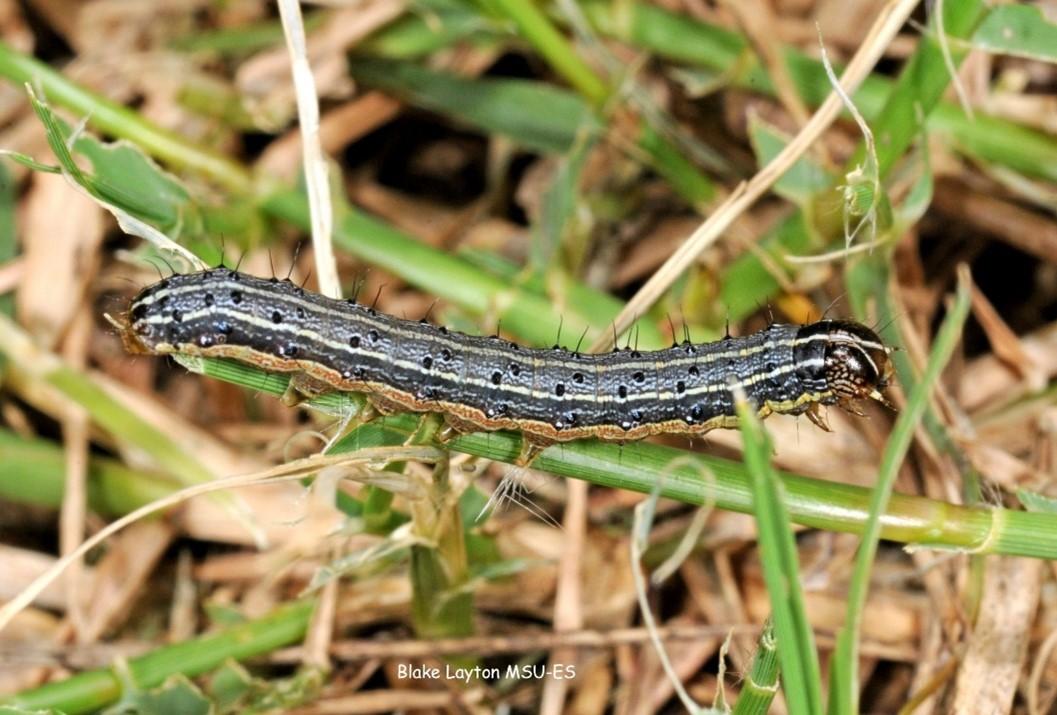Fall Armyworm in Pastures and Hayfields

We have had numerous reports of fall armyworm egg masses in pastures and hayfields in Kentucky in mid-August and now significant damage is occurring from the caterpillars across the state.
Therefore, keep a close watch on your pastures and hayfields for these armyworms over the next few weeks. If you have two to three caterpillars per square foot or more, then you should consider spraying. In other words, these numbers will likely mean you will have considerable damage to late summer/fall growth in your pastures and hayfields.
One of the most effective insecticides is Besiege from Syngenta. This insecticide has dual modes of action and is systemic, resulting in a higher chemical cost per acre ($25 per acre). A considerably less expensive option ($5 per acre) that can be effective on smaller armyworms (less than ¾ inches) is Warrior II from Syngenta. Both insecticides have a 0-day grazing restriction and a 7-day harvest restriction for hay. Below is the full list from UK publication ENT-17.
Fall armyworms are easiest to kill when small and pyrethroid (pyrethrin) insecticides like Warrior (or generic versions of this product) are effective at this stage and considerably less expensive.
An alternative to insecticide application for hay crops near harvest stage, is to mow the crop IMMEDIATELY. Unfortunately, waiting two to three days for good curing conditions is not an option since armyworm defoliation is so rapid. Once cut, the conditions in the mowed forage become less conducive for the armyworm.
Please see recent articles in the Kentucky Pest News from our Kentucky entomologists in Lexington and Princeton for more information on fall armyworm:
Ric Bessin, PhD, Ray Smith, PhD, Chris Teutsch, PhD, and Jimmy Henning, PhD, all forage extension specialists within University of Kentucky’s Department of Plant and Soil Sciences provided this information.
